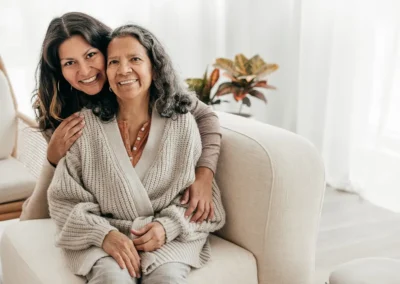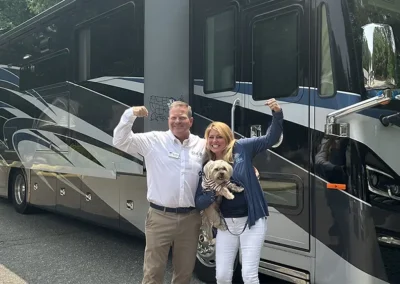Re-published with permission via McKnight’s Senior Living
Jayne Sallerson, chief operating officer and partner at Naperville, IL-based Charter Senior Living, recently spoke with McKnight’s Senior Living about what it’s like to add a community to a management portfolio in the midst of a pandemic, as Charter did with the boutique memory care and assisted living community now known as Charter Senior Living of Hazel Crest.
Q: What was the timeline related to the community?
A: We had started discussions in January. A private equity firm acquired the community. We entered into a consulting agreement in March to help them through some of the transition, and then we took management and operations over on May 1. All the work that goes into the transition occurred in the worst time, which was April. So we had to really pivot in the way we normally transition a community.
Q: What were the big differences between what you normally would do versus how you did it this time?
A: We like to go into the community prior to the official acquisition and meet with the staff, residents and families to talk about our culture. There’s a lot of fear when you’re in that transition period, so that’s important to help mitigate that fear.
We had to do virtual meetings. We all love Zoom, but it’s not the same as standing eye-to-eye with an employee or having a cup of coffee with an employee to say, “It’s going to be OK.” That was one of the toughest things.
Q: Did you need to implement new COVID-related procedures that weren’t in place already?
A: Yes, several. We mandated that oxygen levels and temperatures be monitored twice daily for all residents. We enhanced employee monitoring as well. We have a full COVID infection control manual and binder — all the policies, any tools, any trainings that we have put together over the past several months, and it is updated as policies change. So we shared that.
We also implemented what we’re calling “transitional” suites or wings for any new residents or residents returning from rehab or a hospital stay. They are as far away from other residents as possible, sometimes separated by a plastic curtain. We call them transitional suites because no one wants to move Mom into a COVID wing or an isolation wing.
We also implemented a better relationship with the local health department to continue to secure PPE. In early April, we secured a partnership with a lab, and all of our communities have access to tests. So we got the new community tests.
Q: How has interest been?
A: April was a really tough month. It started picking up again in May, and we’re really seeing leads come in now. Prospects are calling. Families are calling. They’re either going back to work or they can’t continue to care for someone. We do virtual tours and try to connect with them as best we can during the transition of moving someone in during this time. It’s a little bit more hand-holding.
Q: If Charter were to do it all over again, do you think the company would change anything about its approach to assuming management of a new community during a pandemic or a similar circumstance?
A: Yes, we probably would do it again. Everything depends on the cooperation of the current owner of the community. Some transitions are friendlier than others. We probably would attempt to get more PPE in earlier, knowing that we don’t want to walk into a building and all of a sudden have exposure because they didn’t have the supplies. The other thing is, we would have tried to see if we could implement some of our infection-control-related policies and procedures sooner.
Q: How do you think the pandemic might change the way Charter operates overall?
A: It already has changed us. We have several developments in the pipeline. From a design standpoint, two areas we’re focused on are dining and activities. You have to re-look at your dining program and the furniture you purchase, because you’re trying to maintain social distance. In common areas and activity areas, you can’t have the typical seating area where 20 residents can gather. It affects programming, too.
We’ve already enhanced our normal infection control policies, and like preparing for a hurricane, we have to say, “We need X amount of PPE.” We’ve always had to deal with viruses, whether it was the flu or norovirus, but this just put a hyper focus on it.
Q: Charter has 18 communities in nine states. Has it been a challenge because of differing policies and opening and closing dates related to the coronavirus?
A: It’s been extremely challenging. You could have two different health departments that you’re dealing with in one state, because your communities are in different counties, and you’re also dealing with state licensing. And sometimes they have conflicting directions. Whichever the most stringent state is, we’ve been trying to use that guidance as a baseline so we’re prepared.
Senior living is a relatively small sector, even though it seems big, so there has been a lot of information and protocol-sharing among operators. That has been really helpful, because it’s an unknown for everybody. There were no egos. Argentum, the American Seniors Housing Association and even all of the real estate investment trusts have been behind it. Everyone really came together.


